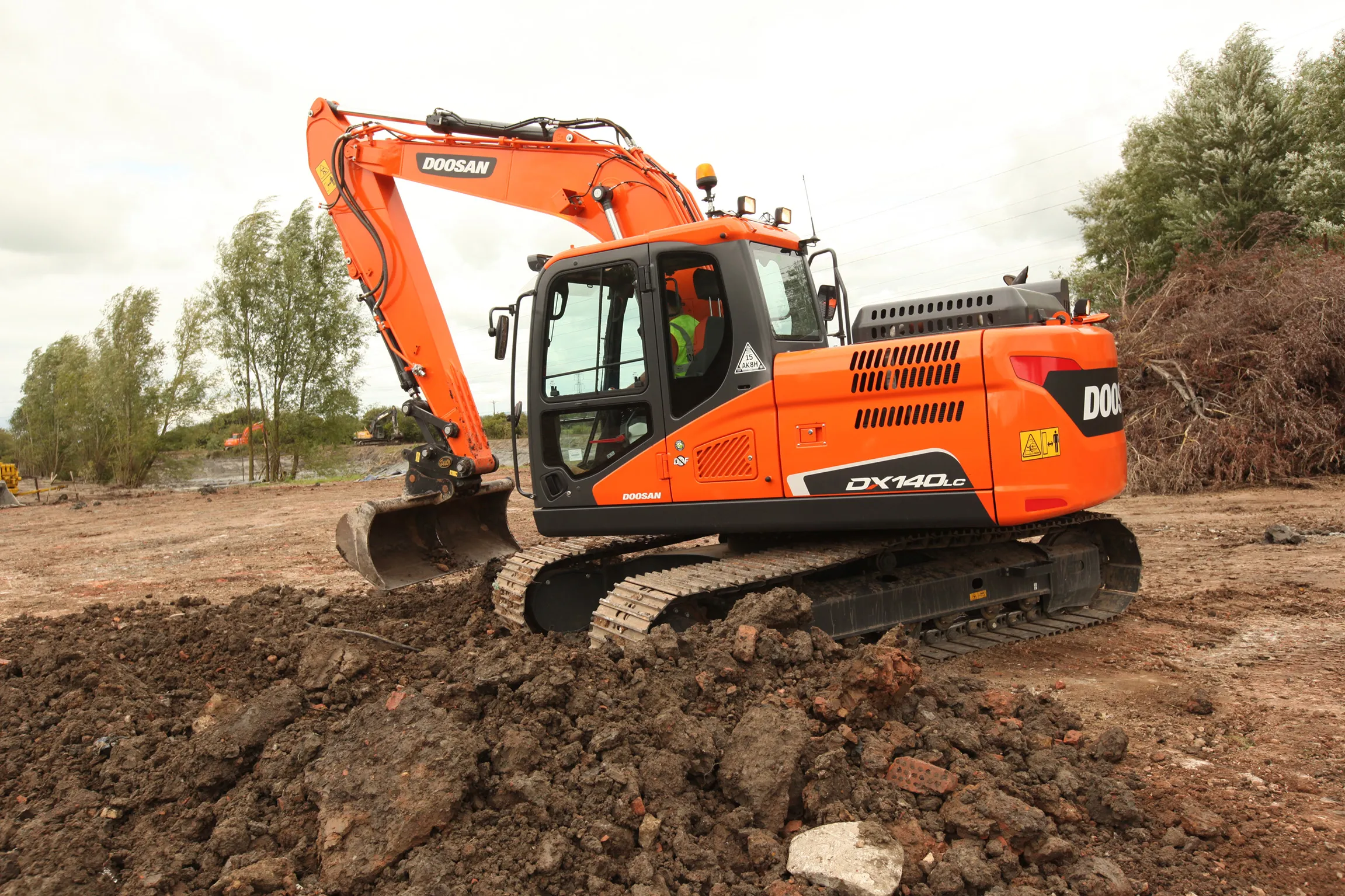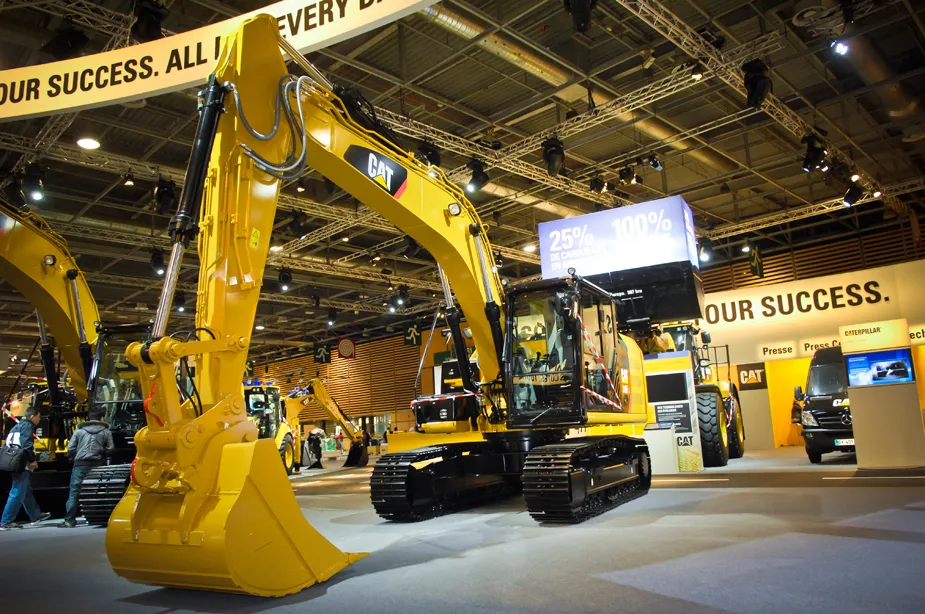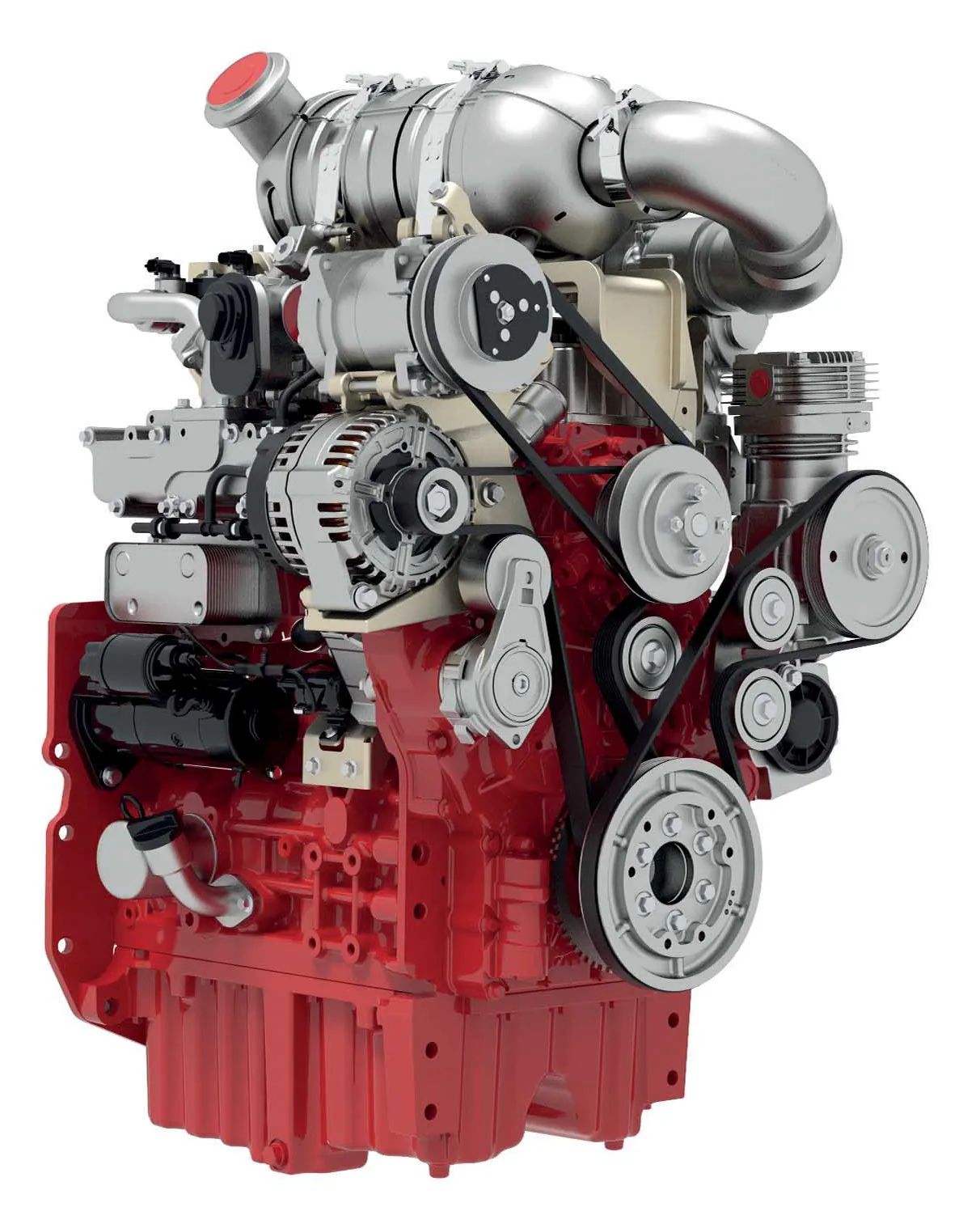Part of the company’s new ‘LC-5’ range of machines meeting the latest Stage IV emission regulations, the DX140LC-5 14tonne crawler excavator has been launched by Doosan Construction Equipment. The DX140LC-5 model sets a new benchmark for this class of excavator worldwide, providing greatly improved performance compared to the previous ‘LC-3’ Stage IIIB model.
The improved performance of the DX140LC-5 includes a 5% increase in engine power and 4% greater torque. In addition, traction has been booste
January 6, 2017
Read time: 3 mins

Part of the company’s new ‘LC-5’ range of machines meeting the latest Stage IV emission regulations, the DX140LC-5 14tonne crawler excavator has been launched by 695 Doosan Construction Equipment.
The DX140LC-5 model sets a new benchmark for this class of excavator worldwide, providing greatly improved performance compared to the previous ‘LC-3’ Stage IIIB model.
The improved performance of the DX140LC-5 includes a 5% increase in engine power and 4% greater torque. In addition, traction has been boosted with an increase in drawbar pull of about 18% and front lifting capacity has been increased on average by 10%, with side capacities 12.5% higher.
Complementing these figures, the fuel consumption in the DX140LC-5 has been lowered by 3% compared to the previous generation machine.
At the heart of the new DX140LC-5 is the299 Perkins 1204F engine, which combines reduced fuel consumption with the power and torque of larger engines with a smaller displacement. The new Perkins engine uses an electronically controlled, high-pressure common-rail fuel system (2000 bar) – which reduces particulate matter emissions from the cylinder – and a waste-gate turbocharger.
Further fuel efficiency results from the electric fan clutch on the DX140LC-5 excavator which drives the cooling fan at optimum speed. Based on coolant, hydraulic oil, cooled charged air temperatures and target engine speeds, the fan speed is controlled electrically – resulting in much lower fan noise and better fuel efficiency.
The cab offers super controllability with a new system that enables attachments to be operated from either the joystick or a two-way pedal. Users also have the unique jog shuttle switch which remains a feature exclusive to Doosan excavators worldwide.
Being able to switch control of the auxiliary lines between the joystick and the two-way pedal greatly lessens any discomfort that may be caused by extended or repetitive use of the joystick alone to control attachments (such as a shear or a breaker). It is also helpful when precision is required – as the operator can keep full control of the excavator via the joystick while using the two-way pedal for attachments.
For additional convenience, the controls for the auxiliary lines on the joysticks have been repositioned, with the rotation and shear rollers positioned for left/right movement. The joysticks have also been shortened to reduce the effort required to operate them and an additional pedal for straight travel has now been installed on the left of the main travel pedals, a very useful feature when travelling straight over longer distances.
The auto-idling rpm on the DX140LC-5 automatically increases from 800 rpm to 1100 rpm when the temperature goes below 10 °C. This boosts the efficiency of the heating inside the cab.
Air pre-cleaners are fitted as standard on the DX140LC-5, to blow much of the dust, dirt, insects, rain and snow out of the air intake, to ensure cleaner air is sent to the engine air filter. This extends air cleaner servicing intervals, enhancing uptime and productivity.
To avoid permanent engine damage, an acoustic alarm has been added to call the operator’s attention to ‘water in fuel’. If the operator ignores the signal after several alerts, the engine and pump are automatically derated. In addition, to make it easier for operators to understand the importance of warnings and to communicate the proper warning codes, pop-up menus appear with detailed information with easier to identify warnings.
The DX140LC-5 model sets a new benchmark for this class of excavator worldwide, providing greatly improved performance compared to the previous ‘LC-3’ Stage IIIB model.
The improved performance of the DX140LC-5 includes a 5% increase in engine power and 4% greater torque. In addition, traction has been boosted with an increase in drawbar pull of about 18% and front lifting capacity has been increased on average by 10%, with side capacities 12.5% higher.
Complementing these figures, the fuel consumption in the DX140LC-5 has been lowered by 3% compared to the previous generation machine.
At the heart of the new DX140LC-5 is the
Further fuel efficiency results from the electric fan clutch on the DX140LC-5 excavator which drives the cooling fan at optimum speed. Based on coolant, hydraulic oil, cooled charged air temperatures and target engine speeds, the fan speed is controlled electrically – resulting in much lower fan noise and better fuel efficiency.
The cab offers super controllability with a new system that enables attachments to be operated from either the joystick or a two-way pedal. Users also have the unique jog shuttle switch which remains a feature exclusive to Doosan excavators worldwide.
Being able to switch control of the auxiliary lines between the joystick and the two-way pedal greatly lessens any discomfort that may be caused by extended or repetitive use of the joystick alone to control attachments (such as a shear or a breaker). It is also helpful when precision is required – as the operator can keep full control of the excavator via the joystick while using the two-way pedal for attachments.
For additional convenience, the controls for the auxiliary lines on the joysticks have been repositioned, with the rotation and shear rollers positioned for left/right movement. The joysticks have also been shortened to reduce the effort required to operate them and an additional pedal for straight travel has now been installed on the left of the main travel pedals, a very useful feature when travelling straight over longer distances.
The auto-idling rpm on the DX140LC-5 automatically increases from 800 rpm to 1100 rpm when the temperature goes below 10 °C. This boosts the efficiency of the heating inside the cab.
Air pre-cleaners are fitted as standard on the DX140LC-5, to blow much of the dust, dirt, insects, rain and snow out of the air intake, to ensure cleaner air is sent to the engine air filter. This extends air cleaner servicing intervals, enhancing uptime and productivity.
To avoid permanent engine damage, an acoustic alarm has been added to call the operator’s attention to ‘water in fuel’. If the operator ignores the signal after several alerts, the engine and pump are automatically derated. In addition, to make it easier for operators to understand the importance of warnings and to communicate the proper warning codes, pop-up menus appear with detailed information with easier to identify warnings.







